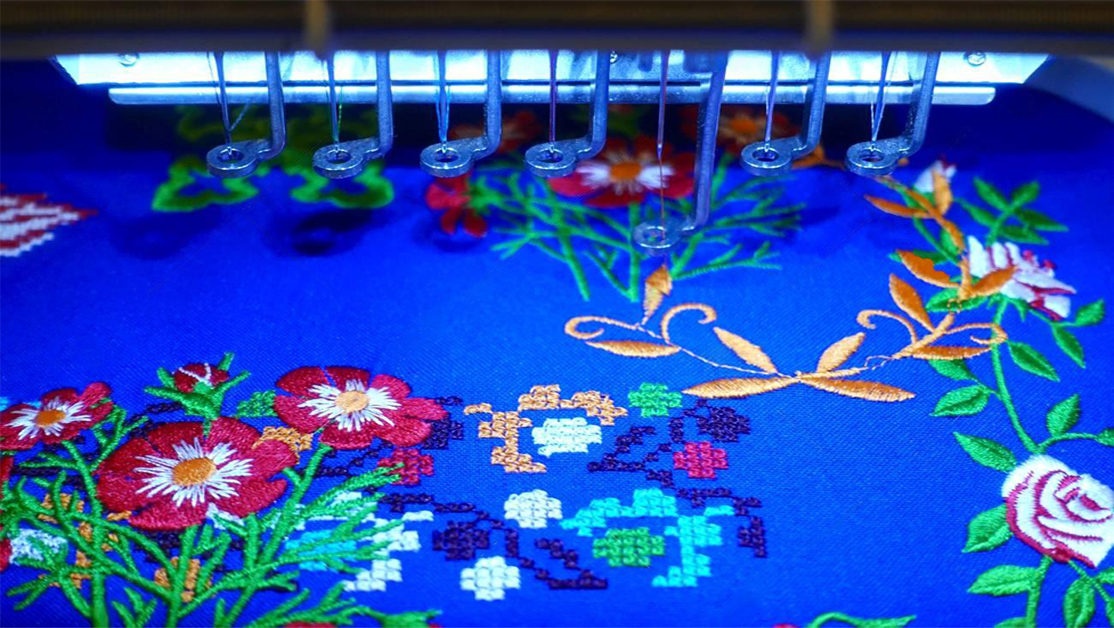
From Design to Thread: Navigating the World of Embroidery Digitizing
Embroidery has come a long way from the traditional needle and thread method. In the contemporary world, it has seamlessly merged with digital technology, giving birth to a fascinating process known as embroidery digitizing. This transformative technique bridges the gap between design and thread, opening up a world of possibilities for creative expression and precision in the world of embroidery.
Understanding Embroidery Digitizing
Embroidery digitizing is the process of converting a design into a format that embroidery machines can understand and execute. This digital file contains information about the placement, colors, and types of stitches required to recreate the design accurately. While it may sound technical, the essence lies in the marriage of traditional craftsmanship and modern technology.
The Artistic Journey Begins: Creating the Design

Everything in embroidery digitizing starts with a design. Whether it's a company logo, a personalized monogram, or a complex illustration, the process begins on a digital canvas. Graphic designers use specialized software to create intricate designs, paying close attention to color choices, stitch types, and the overall visual impact.
Converting Art to Code: The Digitizing Process
Once the design is finalized, the next step is to convert it into a language that the embroidery machine can interpret. This is where the digitizing process takes center stage. Digitizers use specialized software to meticulously map out each stitch, assigning colors, stitch types, and directions. It's a process that requires both technical skill and an artistic eye, ensuring that the essence of the design is retained in the final embroidered piece.
Precision in Every Stitch: The Role of Software
Embroidery digitizing software is the backbone of the entire process. Advanced programs provide digitizers with a range of tools to manipulate stitches, adjust densities, and preview the final result. Some software even simulates the stitching process, allowing digitizers to catch any potential issues before the design reaches the production phase. This emphasis on precision ensures that the final embroidered piece mirrors the original design faithfully.
Navigating the Digital Thread
The digital file, often in formats like DST or PES, serves as the bridge between the design and the embroidery machine. As this file travels from the designer's computer to the embroidery machine, it carries with it the intricacies of the envisioned design. It's the digital thread that guides the physical thread through the fabric, transforming a concept into a tangible, embroidered masterpiece.
Machine Mastery: The Embroidery Process

Embroidery machines play a pivotal role in bringing digital designs to life. These machines are equipped with multiple needles and a sophisticated system that reads the digital file, interpreting each command to create the final embroidered piece. The precision and speed of modern embroidery machines have revolutionized the industry, allowing for the production of intricate designs on a mass scale.
The Dance of Thread and Fabric: Watching the Magic Unfold
As the embroidery machine begins its dance, there's a mesmerizing quality to watching the design come to life. The needles move with rhythmic precision, guided by the digital instructions to create intricate patterns and textures. The once-static design transforms into a dynamic, tactile experience, showcasing the seamless integration of digital precision and traditional craftsmanship.
Challenges and Innovations
While embroidery digitizing has opened up new realms of creativity, it's not without its challenges. The process requires skilled digitizers who understand both the nuances of design and the technical aspects of embroidery machinery. Moreover, staying updated with the latest software and machine advancements is crucial to delivering high-quality results.
Overcoming Complexity: Mastering the Craft
Digitizing complex designs with multiple colors and intricate details requires a deep understanding of the embroidery process. Digitizers often need to make decisions on stitch types, densities, and color gradients to ensure the design is faithfully reproduced. It's a delicate balance between artistry and technical proficiency.
Innovations on the Horizon: 3D Embroidery and Beyond
The world of embroidery digitizing is not static. Innovations continue to emerge, pushing the boundaries of what's possible. One such trend is 3D embroidery, where digitizers create designs that give a three-dimensional effect to the final embroidered piece. This opens up new avenues for creativity, allowing for more dynamic and visually striking embroidered products.
Embracing the Future
As we navigate the intricate world of embroidery digitizing, it's clear that this fusion of art and technology is here to stay. From personalized apparel to corporate branding, the applications are vast and diverse. The key lies in embracing the potential of this innovative process while respecting the craftsmanship that has defined embroidery for centuries.
In conclusion, "From Design to Thread: Navigating the World of Embroidery Digitizing" is a journey that seamlessly blends creativity, technology, and tradition. It's a testament to the adaptability of an ancient craft in the face of the digital age. As we continue to explore the possibilities, one thing remains certain — the future of embroidery is intricately woven with the digital thread, creating a tapestry of endless opportunities for creative expression.

0 Comments